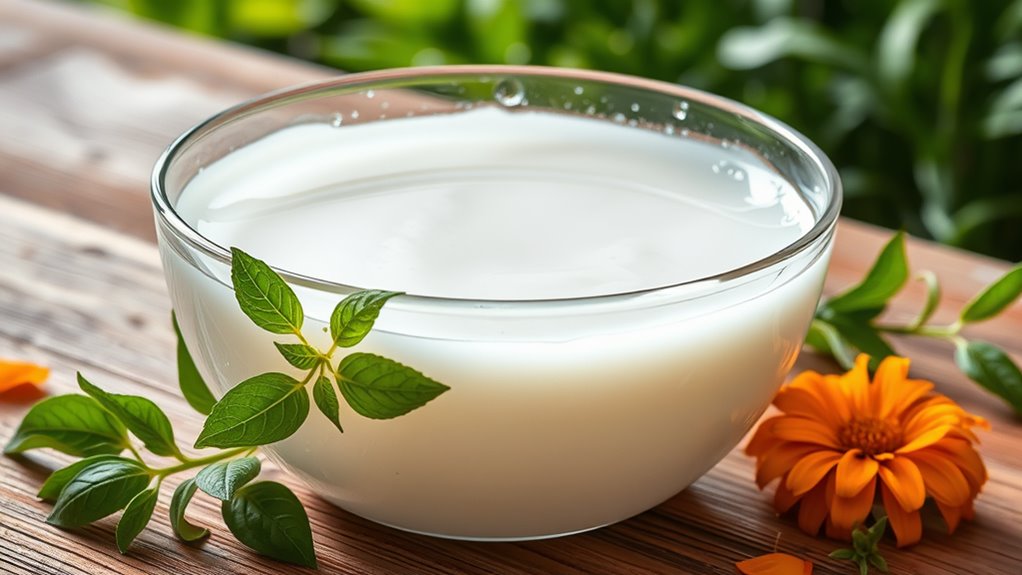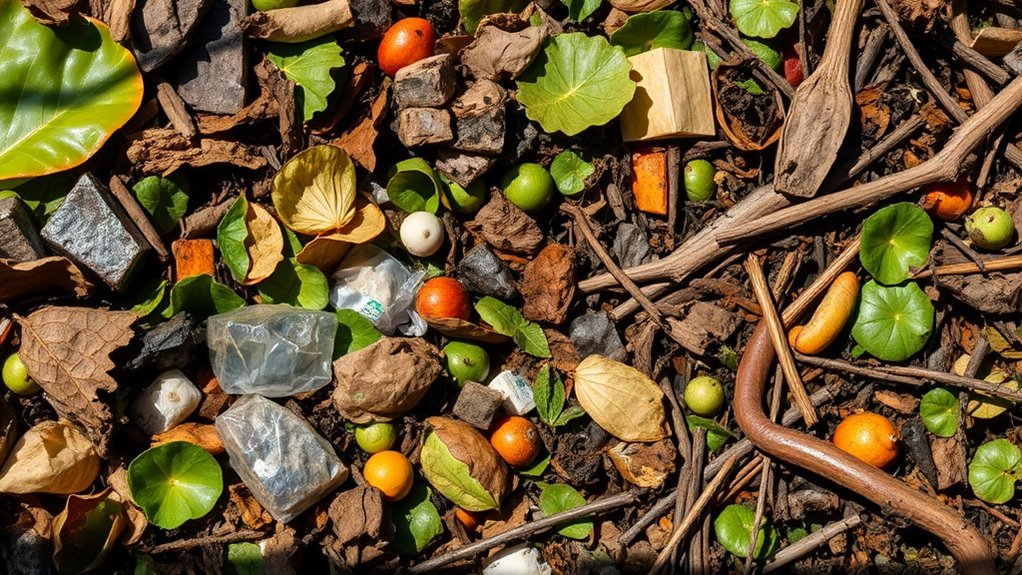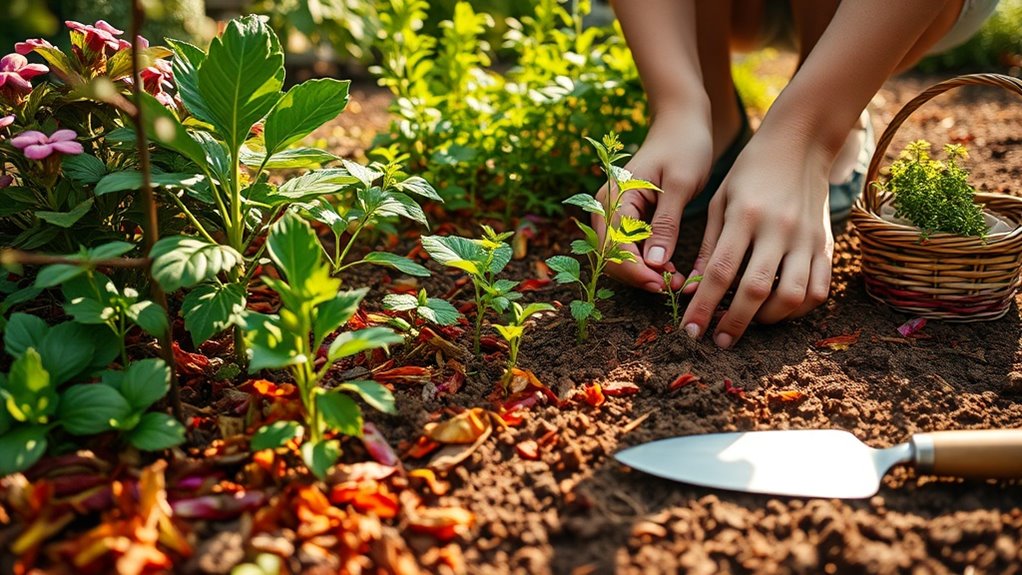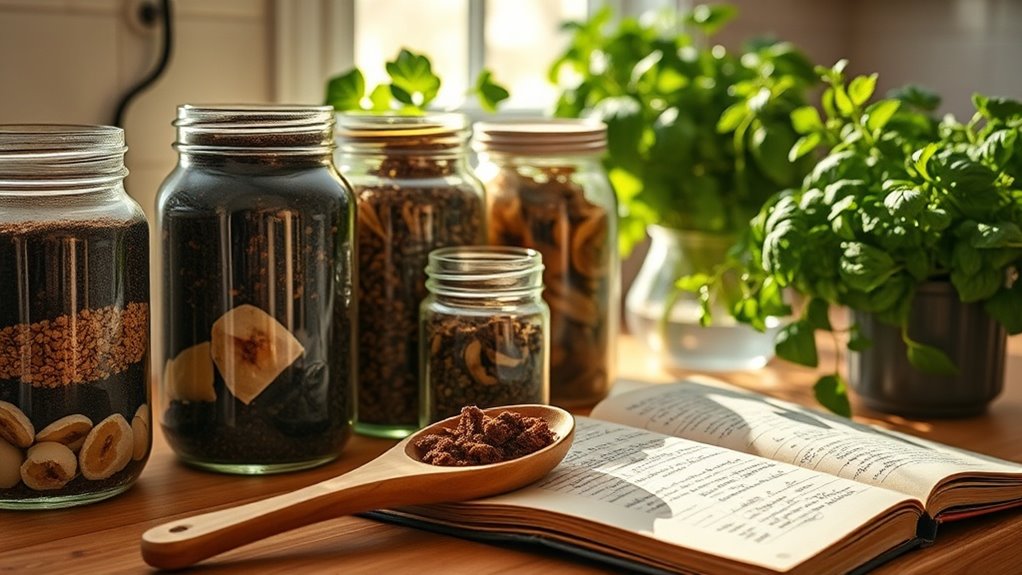Make a Supercharged Fertilizer With Just Rice Water
Making a supercharged fertilizer with rice water can significantly enhance plant growth and yields. This process leverages the nutrients released from rinsing uncooked rice, which are rich in essential vitamins and minerals. By fermenting the water, you create a potent solution that can be diluted and applied effectively. However, understanding the precise methods for preparation and application is crucial for maximizing its benefits. Exploring these steps can reveal how to truly optimize your gardening efforts.
Key Takeaways
- Rinse uncooked rice and soak it in water for 24-48 hours to extract beneficial nutrients.
- Strain the cloudy rice water, which is rich in vitamins, minerals, and amino acids for plants.
- Dilute the rice water at a 1:3 ratio for general use or adjust as needed based on plant responses.
- Apply the fertilizer during early morning or late afternoon for optimal nutrient absorption.
- Store the rice water in an airtight container in a cool, dark place to prevent spoilage.
Understanding the Nutritional Benefits of Rice Water
Have you ever wondered what makes rice water such a valuable resource for plant nutrition?
This liquid, rich in vitamins, minerals, and amino acids, serves as an excellent rice water fertilizer.
Its high levels of nitrogen, phosphorus, and potassium promote robust plant growth and enhance soil quality.
Research shows that rice water can improve nutrient absorption, stimulate root development, and encourage beneficial microbial activity in the soil.
By using rice water fertilizer, you’re not just recycling a kitchen byproduct; you’re providing your plants with essential nutrients that lead to healthier, more vibrant growth.
Additionally, rice water can be easily made at home, making it a sustainable option for gardeners.
Embrace this simple yet effective gardening resource.
Collecting and Preparing Rice Water
To collect and prepare rice water effectively, start by rinsing uncooked rice in a bowl or pot. Use about one cup of rice, adding two to three cups of water.
Swirl the mixture gently; this helps release starch, vitamins, and minerals from the rice.
After a few minutes, strain the rice, collecting the cloudy water in a separate container.
This water is rich in nutrients beneficial for plants. Additionally, rice water contains essential nutrients that can enhance soil health.
You can store it in the refrigerator for up to a week.
Always make sure to use clean rice to avoid contaminants, ensuring the quality of your fertilizer.
How to Dilute Rice Water for Optimal Fertilizer
To maximize the benefits of rice water as a fertilizer, you’ll need to consider ideal dilution ratios that suit your plants’ needs. Application frequency also plays a crucial role in nutrient absorption, ensuring your plants thrive without the risk of over-fertilization. Finally, storing your diluted rice water properly can maintain its effectiveness, preventing nutrient degradation over time. Additionally, using natural fertilizers like compost tea can further enhance the nutrient profile of your rice water.
Ideal Dilution Ratios
How do you determine the ideal dilution ratios for rice water when using it as fertilizer? The key is balancing nutrient concentration with your plants’ needs. Generally, a 1:3 ratio (rice water to water) works well for most plants. For delicate seedlings, consider a 1:5 ratio. Here’s a quick reference table:
| Ratio | Use Case | Nutrient Concentration |
|---|---|---|
| 1:1 | Heavy feeders | High |
| 1:3 | General use | Moderate |
| 1:5 | Seedlings | Low |
| 1:10 | Weekly maintenance | Very low |
| 1:2 | Fast-growing plants | High |
Adjust based on your plants’ responses.
Application Frequency Tips
Regularly applying diluted rice water as fertilizer can significantly enhance plant growth, but timing is crucial for maximizing its benefits.
Aim to fertilize every two weeks during the growing season, which typically covers spring and summer.
This frequency allows plants to absorb essential nutrients like nitrogen and phosphorus effectively.
Always dilute rice water at a 1:3 ratio to avoid nutrient overload, which can harm roots.
Monitor your plants’ response; if they show signs of stress, reduce application frequency.
During dormancy in fall and winter, limit fertilization to once a month, as nutrient uptake is lower during these periods.
Storage Recommendations for Fertilizer
Diluting rice water properly is essential for creating an effective fertilizer that maximizes nutrient availability for your plants.
To achieve optimal dilution, mix one part rice water with three parts plain water.
This ratio ensures that nutrients remain concentrated without overwhelming your plants.
Once diluted, store the fertilizer in a cool, dark place to prevent bacterial growth and nutrient degradation.
Use an airtight container to minimize exposure to air.
Always check for any signs of spoilage before use; if it smells off or shows discoloration, discard it.
Regularly shake the container to maintain even nutrient distribution before application.
Application Techniques for Best Results
To achieve the best results with rice water as fertilizer, you need to understand the key application techniques. This includes knowing the right dilution ratios, determining how often to apply it, and choosing the ideal timing for use. Additionally, incorporating all-natural fertilizer can enhance the nutrient profile of your garden.
Dilution Ratios Explained
Understanding the right dilution ratios for rice water can significantly enhance its effectiveness as a fertilizer. Typically, a 1:3 ratio of rice water to water works well for most plants, providing essential nutrients without overwhelming them.
For seedlings or sensitive plants, consider a more diluted ratio, such as 1:5. This approach minimizes the risk of nutrient burn while still delivering benefits.
On the other hand, for robust, established plants, you might experiment with a 1:2 ratio to maximize nutrient uptake.
Always observe your plants’ reactions to adjust the ratios accordingly, ensuring optimal growth and health.
Frequency of Application
Applying rice water as a fertilizer requires careful consideration of frequency to maximize its benefits. Ideally, you should apply it every two to four weeks, depending on your plants’ needs.
Over-fertilizing can lead to nutrient buildup, which may harm your plants. Monitor their growth and adjust the frequency accordingly.
If you notice yellowing leaves or stunted growth, consider reducing the application rate.
Conversely, if your plants exhibit vigorous growth and healthy color, you might maintain or slightly increase the frequency.
Always observe your plants’ responses and adapt your approach for optimal results without overwhelming them.
Ideal Timing for Use
Timing your application of rice water can significantly impact its effectiveness as a fertilizer.
The best time to apply is during the early morning or late afternoon when temperatures are cooler.
This prevents rapid evaporation, ensuring nutrients penetrate the soil effectively.
Additionally, applying rice water after rainfall or irrigation maximizes nutrient absorption, as the soil is already moist.
Avoid application during peak heat to prevent nutrient loss.
Regular applications every two weeks during the growing season will enhance plant growth and yield.
Monitoring your plants’ response can further refine your timing, optimizing the benefits of this eco-friendly fertilizer.
Tips for Storing Rice Water Fertilizer
Although rice water is a nutrient-rich byproduct, proper storage is crucial to maintain its effectiveness as a fertilizer. To ensure you get the most out of your rice water, follow these storage tips:
| Storage Method | Key Points |
|---|---|
| Refrigeration | Keeps nutrients intact; lasts up to a week. |
| Freezing | Extends shelf life; thaw before use. |
| Airtight Containers | Prevents contamination; use glass or BPA-free plastic. |
Additionally, storing rice water properly helps preserve its nutrient-rich byproduct status, ensuring optimal plant health.
Plants That Thrive on Rice Water Fertilizer
Rice water fertilizer isn’t just a storage solution; it’s a powerful tool for nurturing a variety of plants.
Many thrive on its nutrient-rich composition, particularly leafy greens like spinach and lettuce.
These plants benefit from the nitrogen and vitamins in the water, promoting robust growth.
Additionally, flowering plants such as hibiscus and orchids respond well, enhancing their blooming potential.
Root vegetables like carrots and radishes also show improved yields when fed with rice water.
Moreover, incorporating fresh greens from your own garden can significantly enhance the overall health and flavor of your meals.





